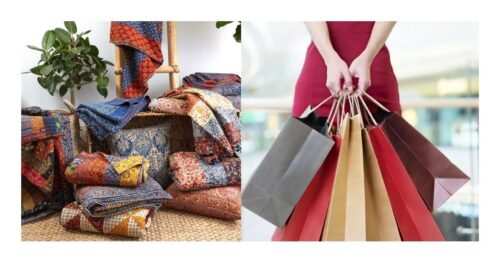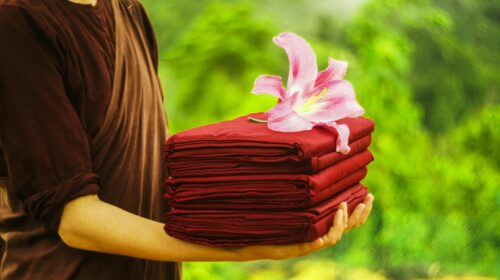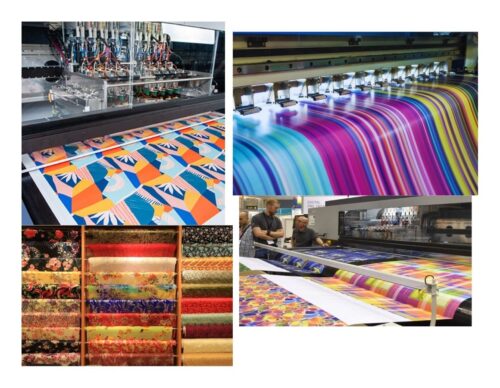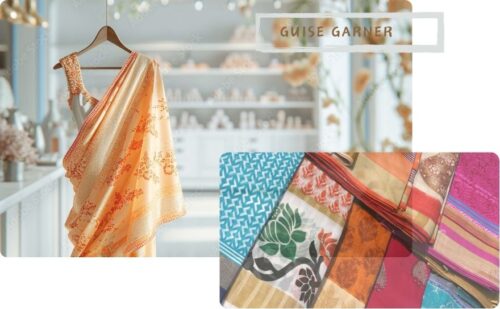How to Style Fashion Textile
“Style is the language of fashion, and fashion textiles are the words that create a captivating and unforgettable story.”

Fashion textile plays a vital role in the world of fashion. It encompasses a wide range of materials, patterns, and designs that are used to create stunning garments and accessories. Whether you’re a fashion enthusiast or a professional designer, understanding how to style fashion textiles is crucial. In this article, we will explore various tips and techniques to help you elevate your fashion game and create unique and stylish outfits. So, let’s dive in!
Understanding Fashion Textile
Fashion textiles refer to the materials used in the creation of clothing and accessories. These textiles can be natural, such as cotton or silk, or synthetic, like polyester or nylon. Fashion designers carefully select textiles based on their desired characteristics, including durability, texture, drape, and colorfastness. By understanding the different types of fashion textiles, designers can create garments that align with their vision.
Selecting the Right Fabric
When it comes to styling fashion textiles, selecting the right fabric is crucial. Consider the following factors when choosing fabric for your design:
Purpose: Determine whether the fabric is suitable for the intended purpose of the garment or accessory.
Seasonality: Take into account the season or weather conditions when selecting fabric to ensure comfort and functionality.
Texture: Consider the texture of the fabric and how it aligns with the overall aesthetic you want to achieve.
Care instructions: Look for the care instructions of the fabric to ensure it can be easily maintained and stays longer.
Some popular fashion textile choices include cotton, silk, linen, wool, chiffon, velvet, denim, and leather. Each fabric has its unique characteristics, and understanding them will help you make informed decisions during the design process.
Incorporating Patterns and Prints
Patterns and prints can add visual interest and personality to your fashion creations. Here’s how you can incorporate them effectively:
Focus on one statement piece: Pair a patterned garment with solid-colored pieces to create a balanced look.
Mix and match: Experiment with combining different patterns to create a bold and eclectic style. Remember to consider color coordination and scale.
Use patterns strategically: Place patterns strategically to enhance certain body features or flaws and/or create illusions.
Exploring Texture and Layers
Texture and layers play a significant role in creating visually appealing outfits. Consider the following tips:
Mix textures: Combine different fabric textures, such as smooth silk and textured tweed, to add depth and interest to your ensemble.
Layering: Layering fashion textiles allows you to create versatile looks by adding and removing garments. Play with different lengths, proportions, and materials for a stylish outcome.
Color Coordination and Contrast
Color coordination and contrast are essential elements in fashion styling. Follow these guidelines:
Harmonious color schemes: Choose colors that complement each other to create a cohesive and balanced look.
Contrast for impact: Utilize contrasting colors to make a bold statement and draw attention to specific areas or garments.
Embellishments and Trims
Embellishments and trims can elevate the aesthetic appeal of fashion textiles. Consider the following:
Embellishments: Experiment with sequins, beads, pearls, embroidery, or appliques to add intricate details and a touch of glamour.
Trims: Select trims that enhance the overall design, such as lace, ribbons, or fringe, to create texture and visual interest.
Silhouette and Draping
Silhouette and draping techniques can greatly impact the look and feel of fashion textiles. Keep these tips in mind:
Silhouette: Choose silhouettes that flatter your body shape and create a balanced and proportionate appearance.
Draping: Master draping techniques to manipulate fabric and create unique shapes and forms.
Fashion Textile for Different Occasions
Fashion textiles vary depending on the occasion and dress code. Consider the following:
Casual wear: Opt for comfortable and breathable fabrics, such as cotton or linen, for a relaxed and effortless style.
Formal wear: Choose luxurious fabrics like silk or velvet to create elegant and sophisticated outfits suitable for formal occasions.
Relax Wear: It prioritizes comfort, ease of movement, and casual style, making it suitable for unwinding, lounging, and engaging in low-intensity activities. Some commonly used textiles for relax wear include cotton, bamboo, modal, jersey, and knit fabrics.
Traditional Wear: Traditional wear textiles can vary depending on the specific culture or region, but some examples include silk, brocade, velvet, satin, cotton, linen, wool, and traditional handwoven fabrics like ikat or batik.
Sports an Gym Wear: Sports and gym wear commonly use textiles like polyester, spandex, nylon, and mesh to provide durability, stretch, moisture-wicking, and breathability.
Caring for Fashion Textile
Proper care and maintenance of fashion textiles are essential to ensure their longevity. Follow these guidelines:
Read care labels: Always refer to the care instructions provided by the manufacturer to prevent damage.
Storage: Store your fashion textiles in a clean and dry environment to protect them from moisture, pests, and sunlight.
Cleaning techniques: Familiarize yourself with the appropriate cleaning techniques for different types of textiles, whether it’s handwashing, dry cleaning, or machine washing.
Sustainable Fashion Textile
Incorporating sustainable fashion textiles is crucial for promoting ethical and eco-friendly practices. Consider the following options:
Organic fabrics: Choose textiles made from organic and pesticide-free materials, such as organic cotton or Bamboo.
Recycled materials: Utilize recycled fabrics, like polyester made from recycled plastic bottles, to reduce environmental impact.
Where to buy Fashion Cloths

If you are not designing the textile by yourself; here are some top fashion shopping brands from India. These brands offer a diverse range of fashion products, including traditional wear, contemporary clothing, accessories, and more:
- FabIndia
- Anita Dongre
- Ritu Kumar
- Sabyasachi Mukherjee
- Manish Malhotra
- Tarun Tahiliani
- Satya Paul
- Shantanu & Nikhil
- Abu Jani Sandeep Khosla
- Payal Singhal
- AND
- Biba
- W for Woman
- Global Desi
- Manyavar
- Ritu Beri
- Rohit Bal
- Masaba Gupta
- Jaypore
- Good Earth
Here are some of the top international fashion shopping brands. These brands are known for their high-quality fashion products and have a global presence with numerous stores and an online presence:
- Zara
- H&M
- Gucci
- Louis Vuitton
- Chanel
- Prada
- Versace
- Dior
- Burberry
- Hermès
- Balenciaga
- Alexander McQueen
- Saint Laurent
- Dolce & Gabbana
- Valentino
- Calvin Klein
- Tommy Hilfiger
- Ralph Lauren
- Armani
- Nike
Conclusion
Styling fashion textiles requires creativity, knowledge, and attention to detail. By understanding the characteristics of different textiles and incorporating various styling techniques, you can create unique and fashionable outfits. Remember to consider factors such as fabric selection, color coordination, silhouette, and care instructions. With these tips in mind, you’ll be well-equipped to showcase your personal style and create stunning fashion statements.
FAQs
Q:Where can I buy high-quality fashion textiles?
A: You can find a wide range of fashion textiles at fabric stores, online marketplaces, or even directly from textile manufacturers.
Q:How can I determine the quality of a fashion textile?
A: Pay attention to factors such as fabric composition, weave, color fastness, and durability. You can also consult professionals or read reviews for insights.
Q: Are there any specific fashion textiles suitable for summer?
A: Light and breathable fabrics like cotton, linen, or silk are popular choices for summer fashion.
Q: Can I mix different patterns in one outfit?
A: Yes, mixing patterns can create a visually interesting look. Just ensure that the patterns complement each other in terms of color and scale.
Q:How can I make my fashion textiles more sustainable?
A: Opt for eco-friendly materials like organic fabrics or recycled textiles. Additionally, consider supporting brands that prioritize sustainable and ethical practices.
” Still Confuse ? Feel free to connect us. Will try to help out and guide for Fashion Textile Confusion ! ”





